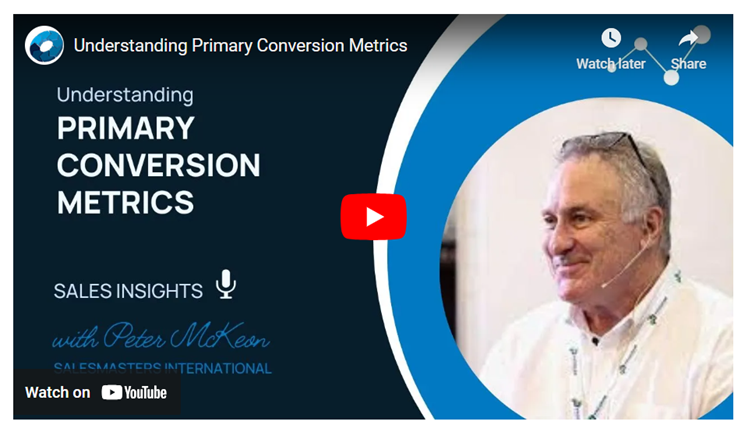Fine-tuning lead conversion through better understanding of metrics.
Peter McKeon, CEO - Salesmasters International

Obtaining a lead is one thing in sales, but it is actually the conversion of that lead that at the end of the day really matters. Lead conversion is one of nine key KPIs we measure in sales, and it is probably the most well-known. So, what does it mean? In simple terms, sales conversion metrics measures the ratio of leads converted to paying customers. We express this simple and critical aspect of business, through our sales conversion rate, or win rate.
With 57% of sales representatives currently not meeting their yearly quotas, low win rate is clearly a broad problem. Despite this, according to Salesforce, only 51% of businesses are currently tracking this vital metric.*
How to calculate win rate
The sales conversion rate (lead to win rate) is expressed as a percentage and is calculated by dividing the number of conversions won by the total number of leads x 100.
For instance, if we had 100 leads come into the business, and sales converted 20 of those into customers, then the win rate would be 20%.
We can measure and track win rate at both an individual and business level. Knowing this rate at any given point in time, helps you understand sales performance in comparison to other team members and compared to business averages. It can also give you insight into the influence of different conditions (such as results from various marketing campaigns, from increased competition, or under seasonal influences) on your business averages. So profoundly important to track in your business.
Download our FREE win rate calculator
What gives sales conversion rate even more meaning?
There are three metrics that in my opinion, are critical to include when we are tracking lead conversion. Tracking these helps you evaluate more effectively the reasons for lead conversion. I call them primary conversion metrics.
Hit play on the audio, or keep reading below, to learn about primary conversion metrics, and how within these numbers, we find the source of truth we can work forward from to increase lead conversion.
Listen to the audio on YouTube
Three primary conversion metrics
Primary conversion metrics are really important metrics for aligning sales and marketing as both teams are going to use this to understand lead quality. Without bamboozling you, here’s the data that as sales leaders we would typically review around converting sales leads.
- Leads closed or won. What percentage of the leads that you obtained were closed or won?
- Lost to no decision. What is the percentage of leads lost in which no decision at all was made?
- Lost to a competitor. What percentage of leads lost went to a competitor?
Lots of businesses simply don’t know these metrics. Many would typically say all leads were lost because of price. Well, that might be true, but maybe you lost the lead because of procrastination by the client? Maybe they elected not to do anything at all? Or they went to a competitor for a different offer? So, it’s incredibly valuable to understand those three metrics in order to know for sure.
By tracking the primary conversion metrics, you are able to unpack win rate further and understand what happened to leads that weren’t won. This is profoundly helpful, not only for the individual salesperson, but on a business level to enable strategic decisions to be made, Accurate conversion data then also talks more clearly to the calibre of leads coming from marketing and whether changes are needed in that space.
Download our FREE win rate calculator to help you track, visualise and analyse your primary conversion metrics.


